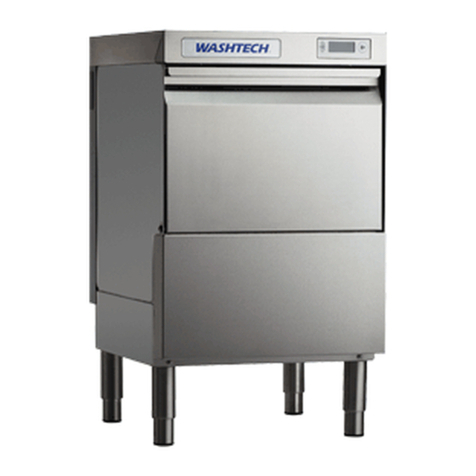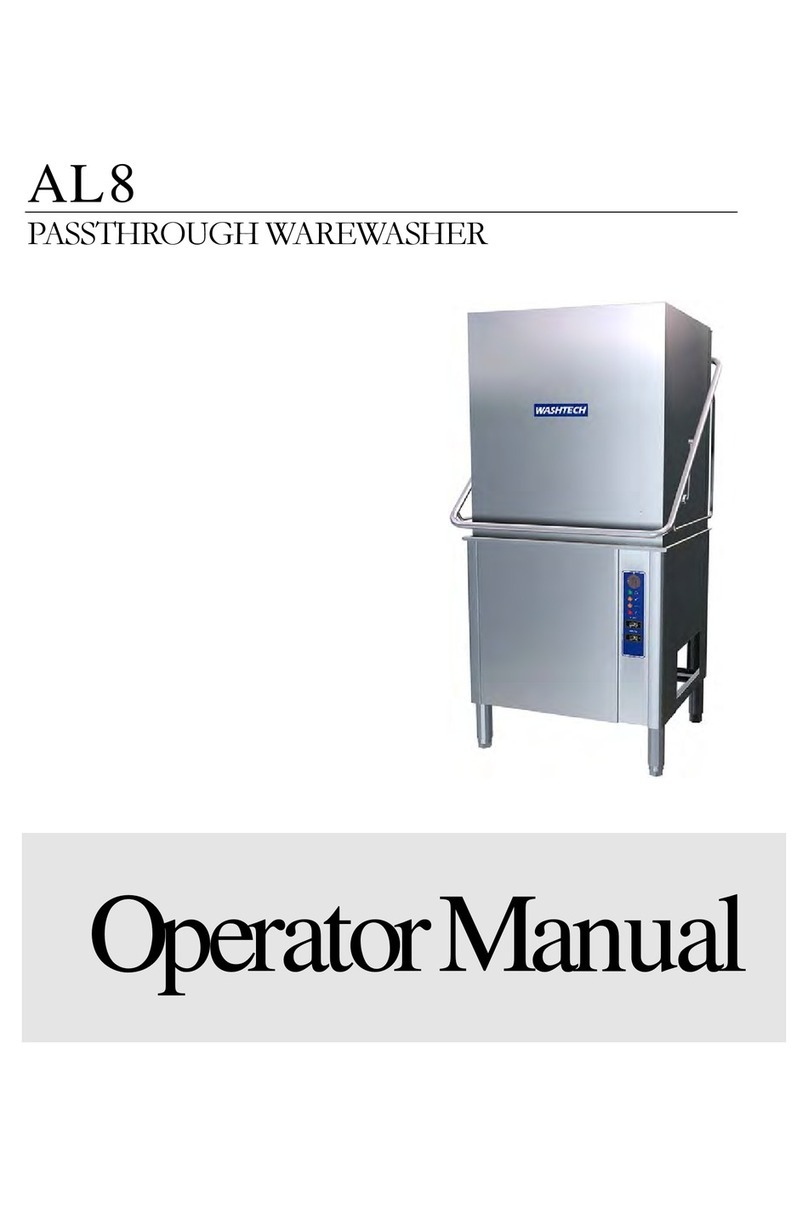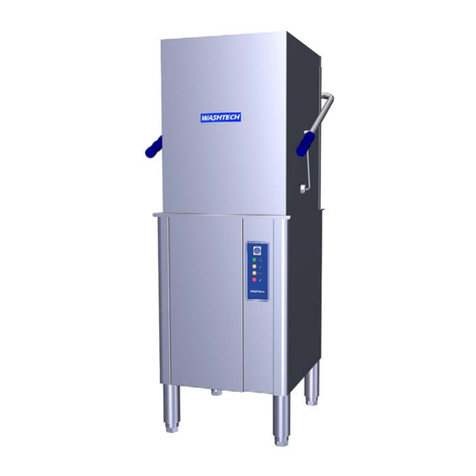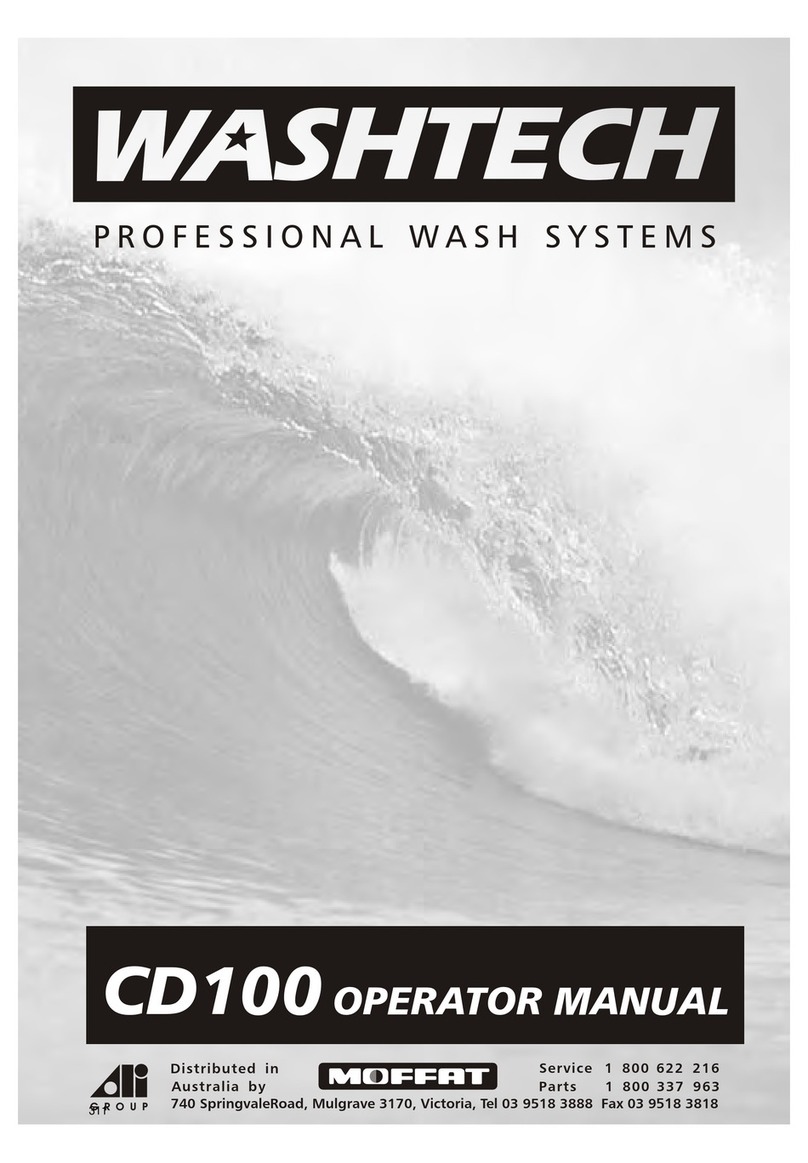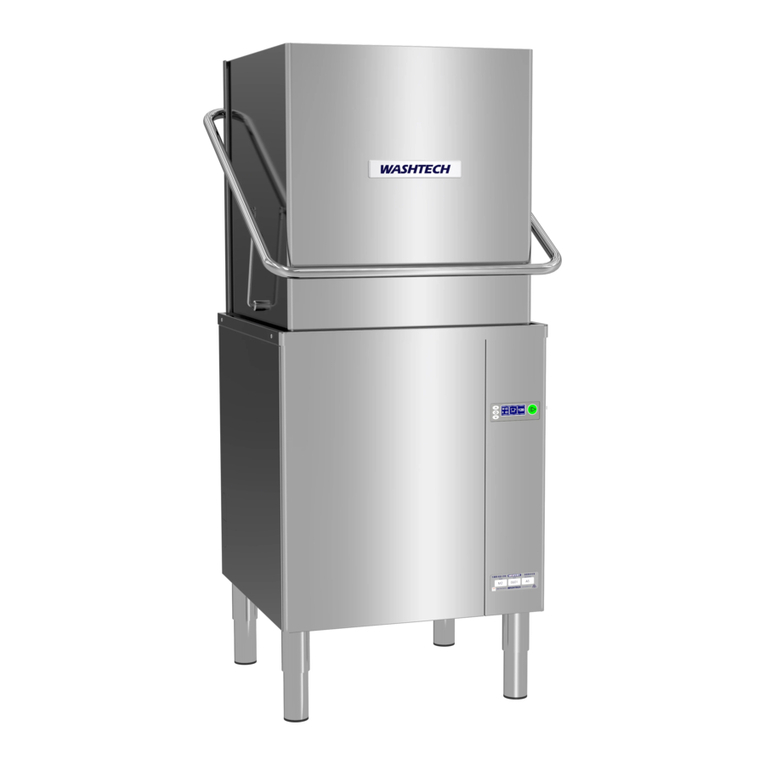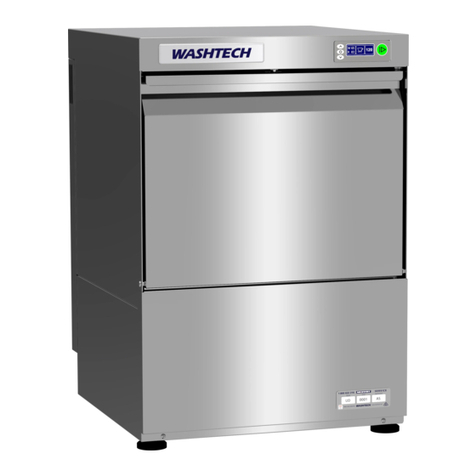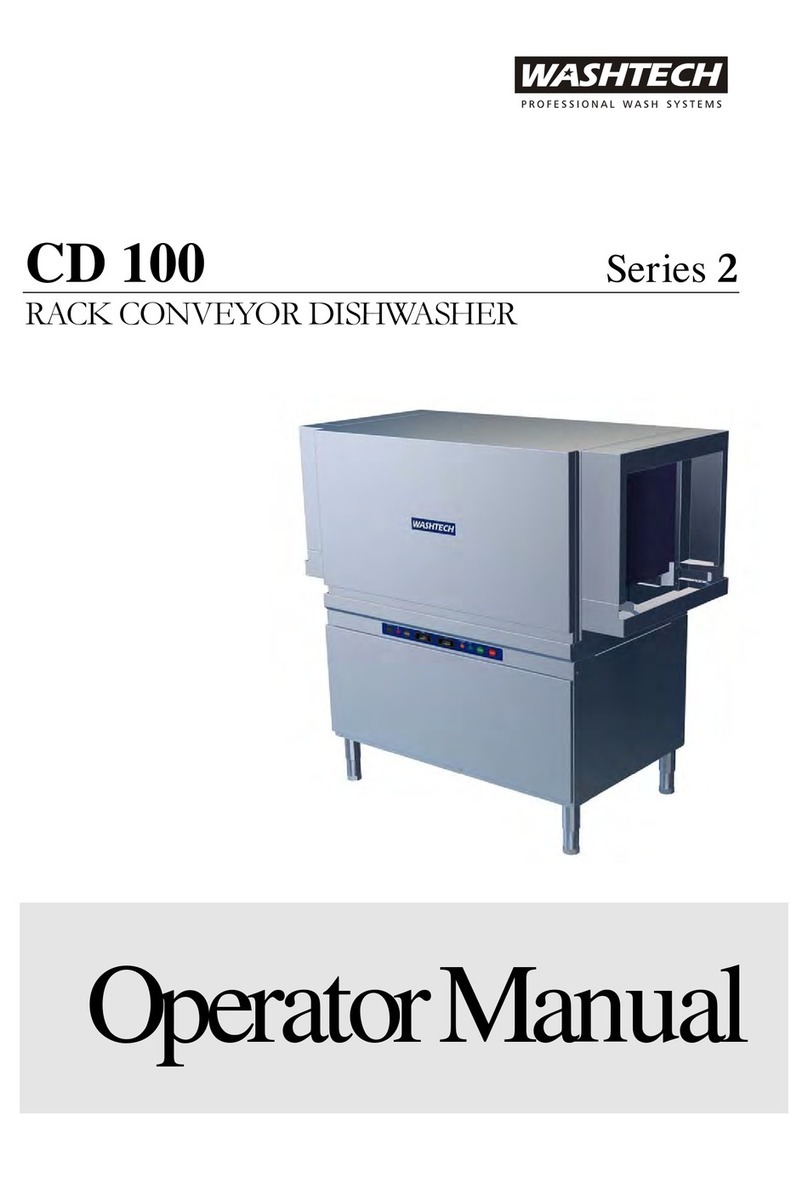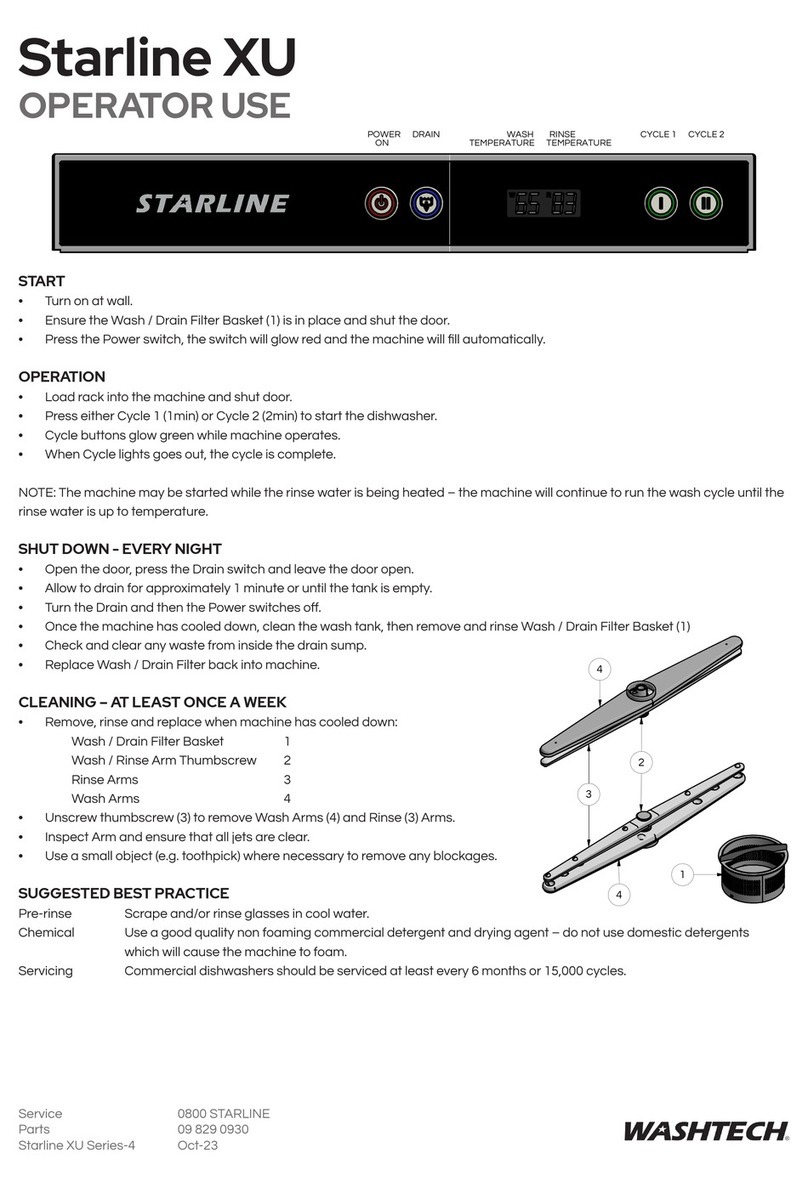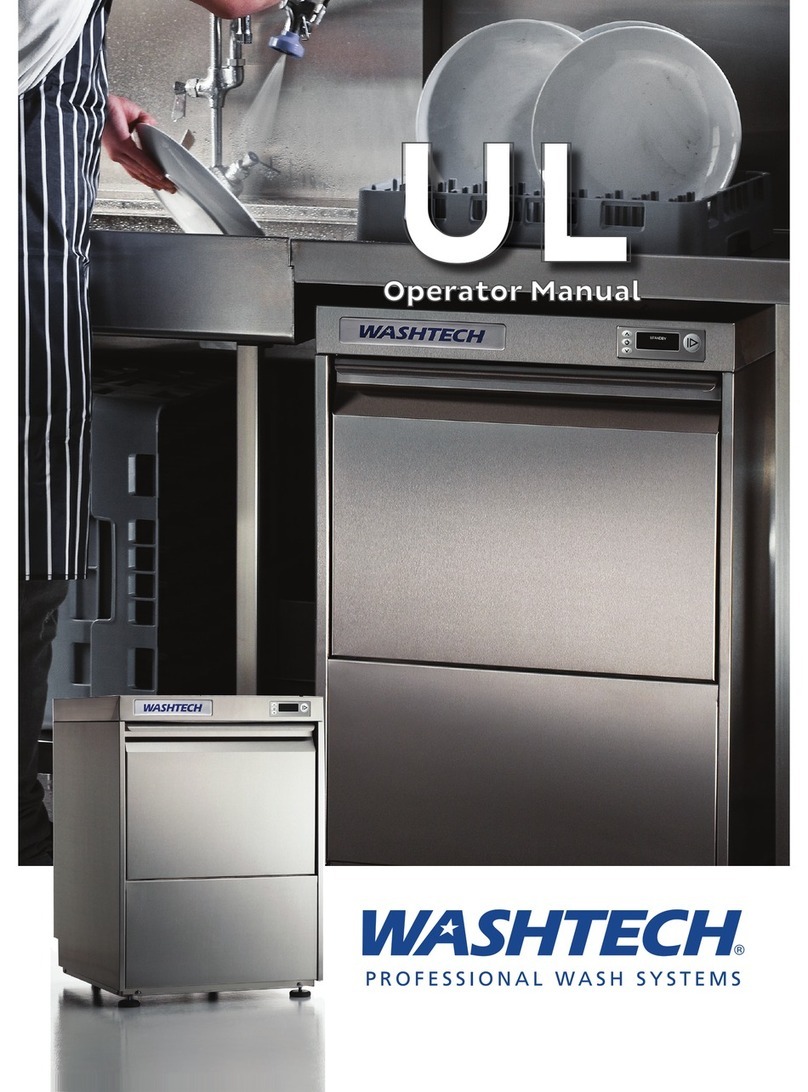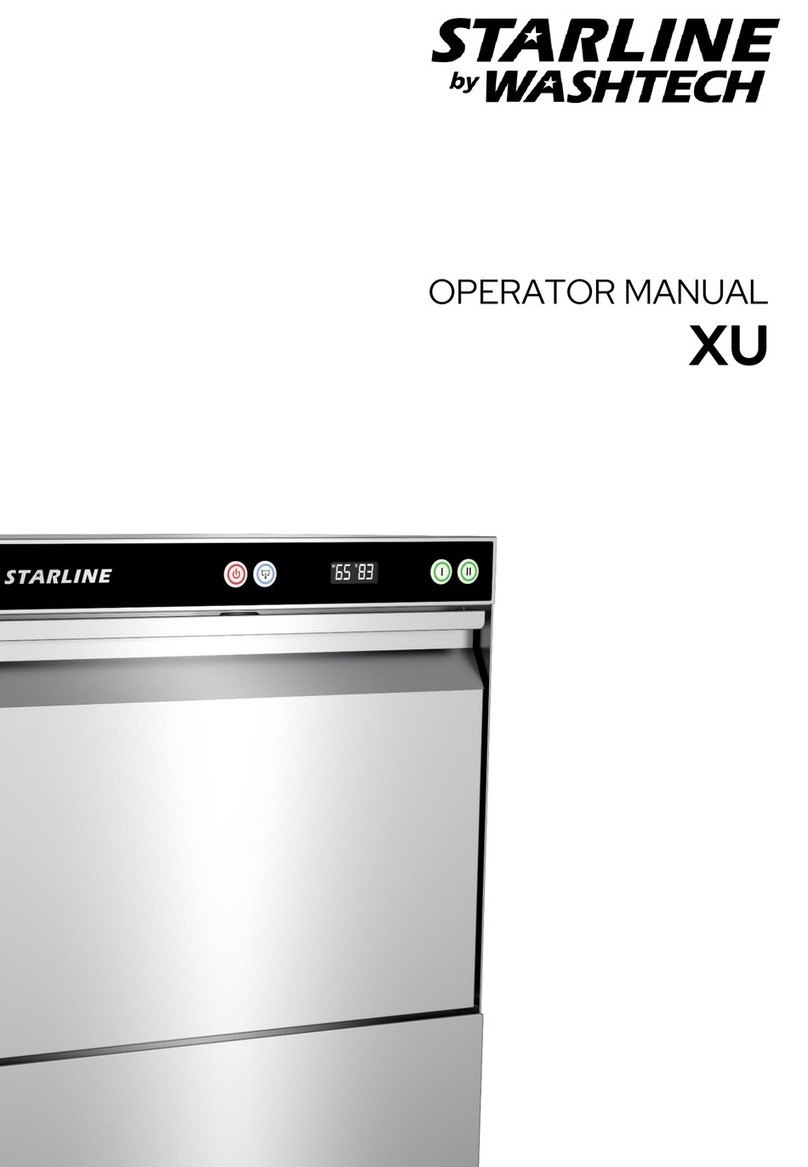Installation
WARNING Installer must be suitably qualified and ensure compliance with all
local codes and standards including AS/NZS 3500.1.
Failure to comply even partially with installation instructions may void the
warranty.
Positioning
Unpack machine, check for damage & complete delivery. Install machine on sound
waterproof self-draining floor & adjust feet to level machine. Adjacent surfaces
should be heat resistant and moisture proof, especially benchtop lower surfaces
above undercounter machines. Allow room for detergent to one side of machine
or in adjacent cupboard. 20litre container requires about 450H x 250W x 350D,
but smaller containers are available from many suppliers.
Hot Water Temperature 65°C ± 5°C
Connection 20 mm (3/4” BSP) male – flexible hose supplied
Flow rate minimum 20 litres per minute
Consumption per cycle 3 litres approximately
Backflow prevention DCV = Dual Check Valve supplied with machine
Pressure 200-350 KPa = 30 - 50 Psi
Above this range fit pressure limiter. Don’t use small diameter plastic supply lines
especially below this range when optional rinse booster pump may be required.
FLUSH supply line before connection. Connect supplied DCV to water supply.
Poor quality supply or excessive water hardness may affect performance or damage
machine – filtration and/or softening is recommended.
Waste Fit drain pump hose to sink waste trap or 750 high open waste - refer installation
diagram
Power Electrical supply required is 15A 240V 50Hz via switched outlet adjacent to
machine, which is supplied with cord set including 15A plug (located under the
rear cover)
Detergent
If detergent pump is fitted insert pump inlet hose with white ceramic collar into
container of commercial low foam detergent. Commercial detergents are usually
hazardous – read instructions and handle with care.
Rinse Aid
If rinse aid injector is fitted insert injector inlet hose with steel collar into rinse aid
container. Check fluid is steadily rising inside hose during pulse at start of rinse
cycle. Rotate adjusting screw clockwise to reduce flow, anticlockwise to increase
flow. The injector is activated by rinse pressure - to prime the system switch the
machine off and back on several times during filling to mimic multiple rinse cycles
(otherwise it will take several operating cycles to bring rinse fluid to required
concentration).
Installation Checklist
Complete attached Installation Checklist to ensure machine is installed and
running correctly, and operator is familiar with operating procedures.
Troubleshooting
If machine doesn’t fill after switching on power, check & ensure that hot water
supply tap is open, water supply pressure is not below specification & Dual Check
Valve is correctly installed (arrow on the DCV body specifies water flow direction).
